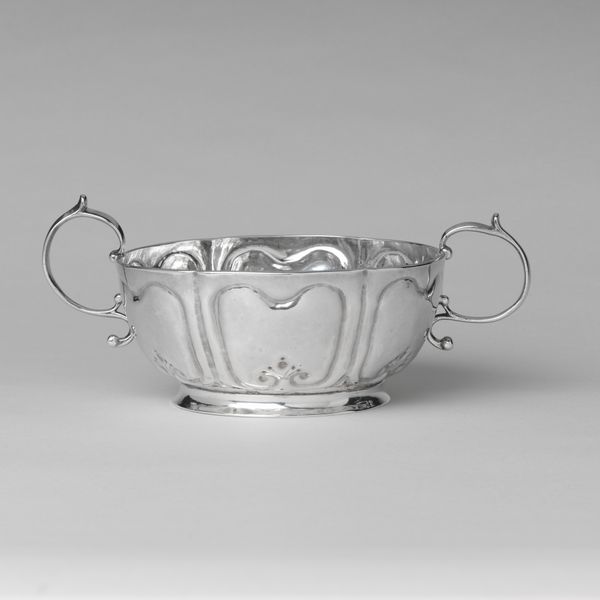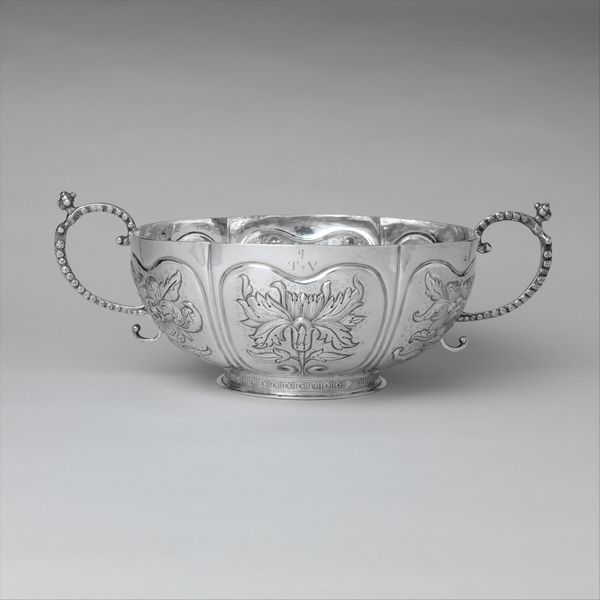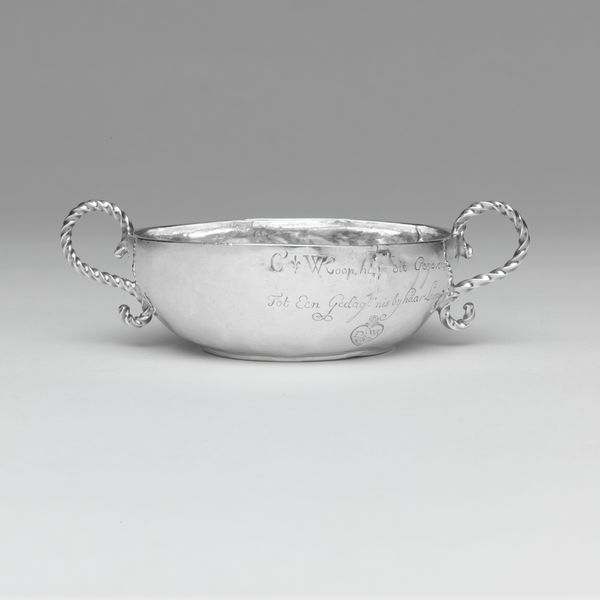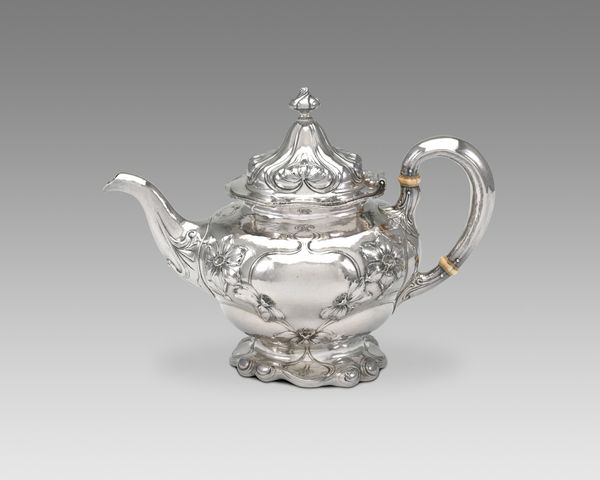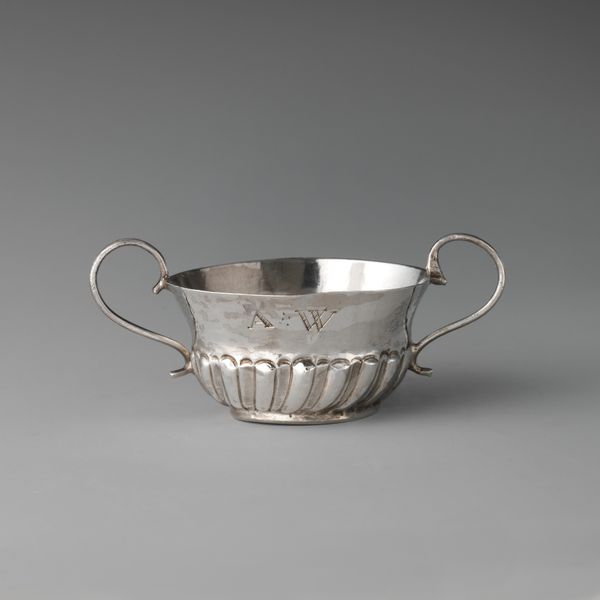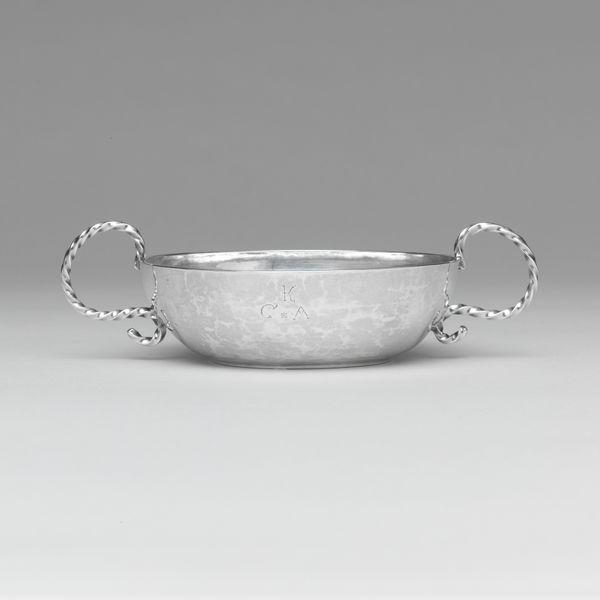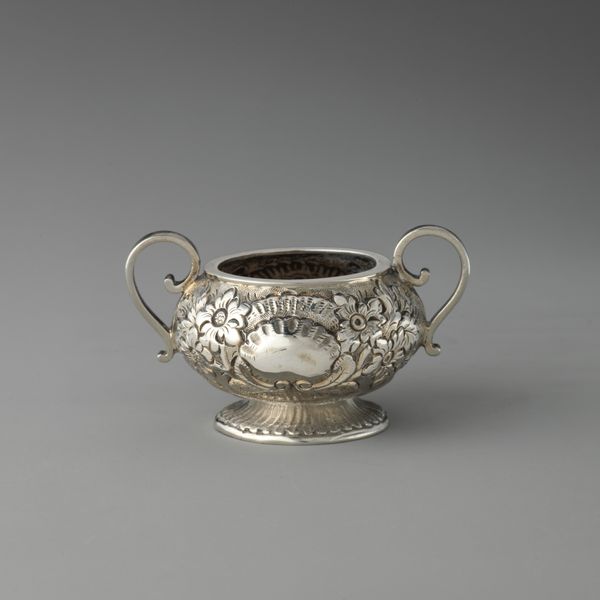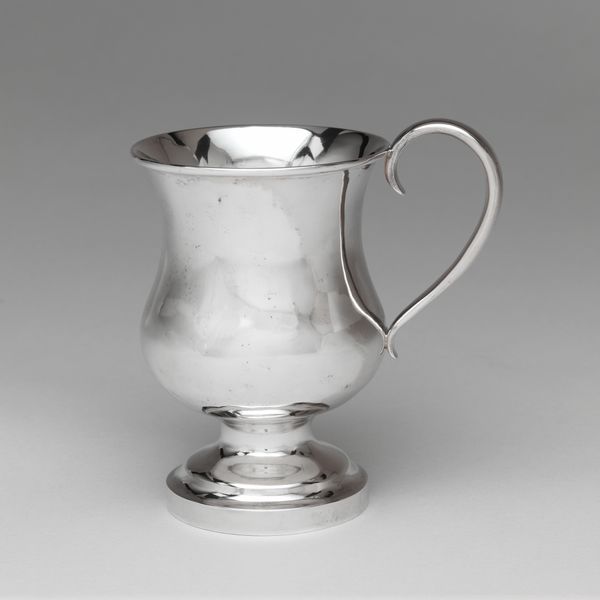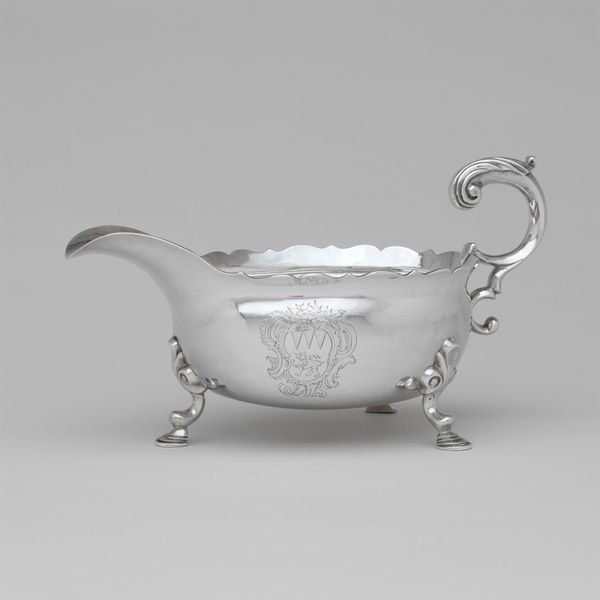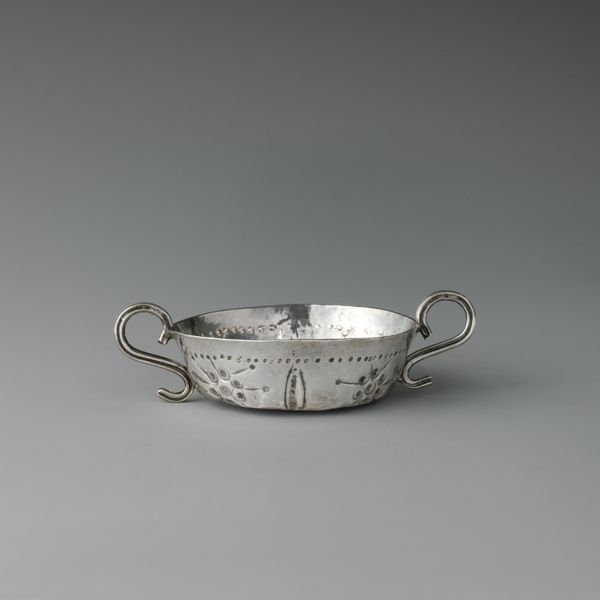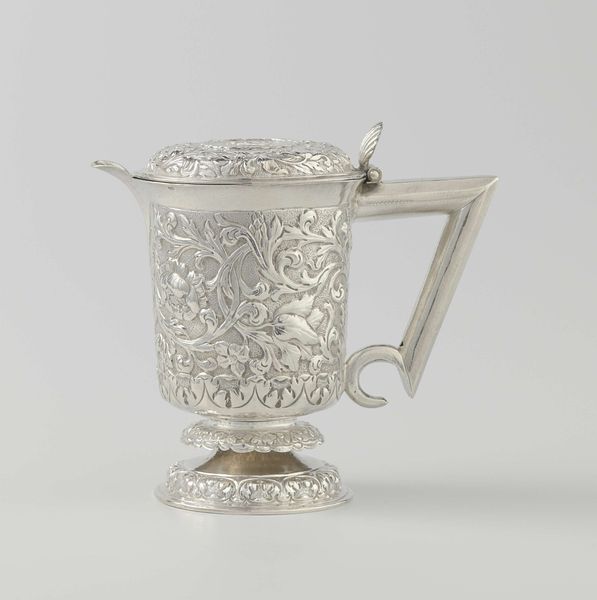
silver, metal, sculpture
#
silver
#
baroque
#
metal
#
sculpture
#
decorative-art
Dimensions: Overall: 1 7/8 x 6 1/4 in. (4.8 x 15.9 cm); 2 oz. 10 dwt. (78.3 g) Lip: Diam. 4 1/2 in. (11.4 cm)
Copyright: Public Domain
Editor: So, this little Dram Cup, made of silver, by Jacob Boelen, dates back to the late 17th century. It’s quite charming actually; the engravings feel delicate and personal. What strikes you about it? Curator: The cup itself is simple, but the engraved decorations carry a symbolic weight. Notice the stylized foliage: does it remind you of anything? Editor: I guess it sort of looks like abstracted leaves or perhaps even feathers? Curator: Precisely. Foliage often signifies growth, renewal, and connection to the natural world, a recurring theme in Baroque art. The form echoes classical motifs of regeneration. And what about the initials 'C.V.D.V.' inscribed prominently? Editor: That's intriguing. A maker's mark, maybe, or perhaps a family crest? Curator: Or initials referring to a motto, a dedication or even an individual. Symbols such as those initials became very important for identifying persons or objects in certain eras and also showed allegiance. The motifs served to give the user psychological assurances. How does this knowledge shift your view of the object? Editor: It makes it more intimate. I am seeing the cultural values now, adding layers of significance. Curator: Yes! Each sip from this cup would be more than refreshment, more like a communion with personal or family identity. These are artifacts layered with meaning. Editor: Absolutely. It is not just a cup, but a vessel holding cultural memory. I never would have seen that at first glance. Curator: Exactly. We are continually adding context to cultural evolution when interpreting visual cues.
Comments
No comments
Be the first to comment and join the conversation on the ultimate creative platform.
